All images taken with 40D, Canon MP-E 65mm f/2.8 1-5X Macro Lens
Jan 21, 2012, 10:36pm.
Viciria sp. female jumping spider with her precious eggs.

January 26, 2012, 1.29pm
Some of the eggs had hatched. Some hadn't though. Click image to view bigger version.
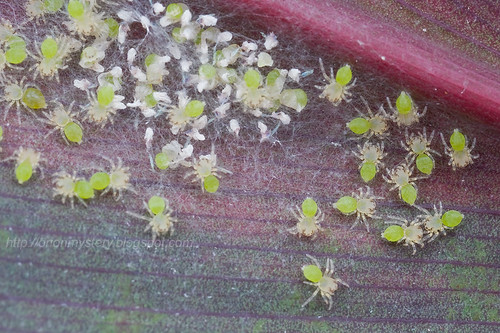
Green, translucent and cute :)
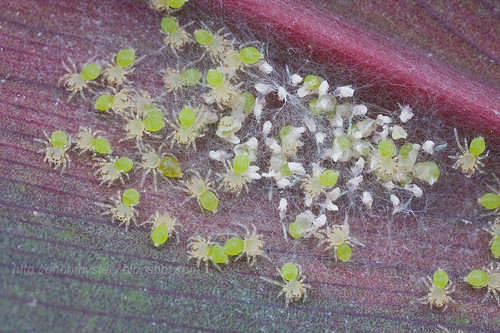
A higher magnification shot of the cuties. Approx. 2X life size i think.

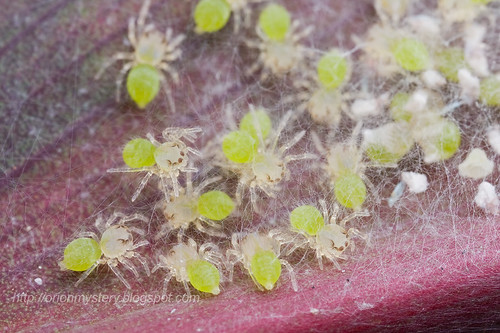
Even closer, approximately 4X life size.

January 31, 2012 at 8.21pm
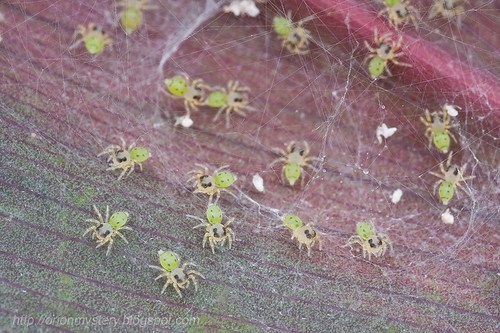
Mom was still around.


A closer look at the cute Viciria sp. spiderlings
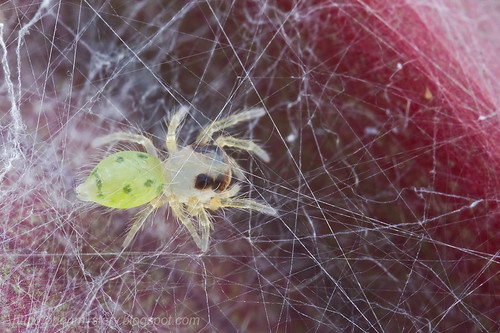
February 2, 2012 at 4.01pm
First instar Viciria sp. spiderling.
This spiderling had already molted! The eyes were developed. There were hairs on the cephalothorax. The baby fat was gone and the abdomen was much slimmer compared to unmolted ones.
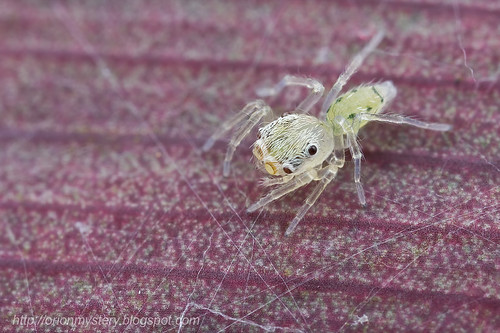
The exuvia. You will see these in some of the following images.
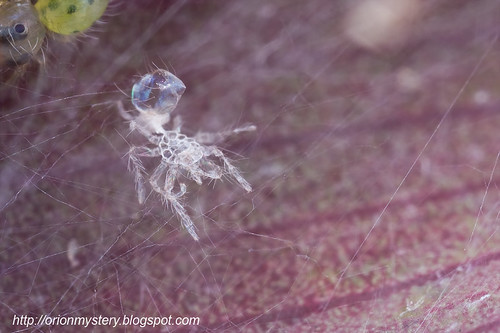
I wondered why mom was still around even after the spiderlings had molted. But I think i found the answer in the next image. Pardon the poor IQ. From a point and shoot camera.
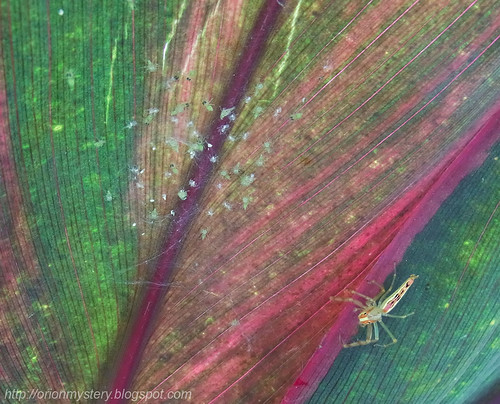
The answer can be found in this image.
First instars (molted once) Viciria sp. spiderlings. Not all though. If you look carefully, you will see that two of them hadn't molted yet! Can you point out which two?
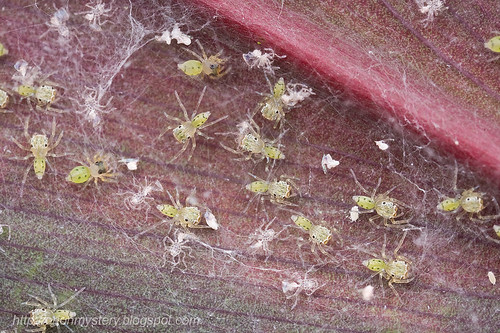
Three unmolted ones in this image.
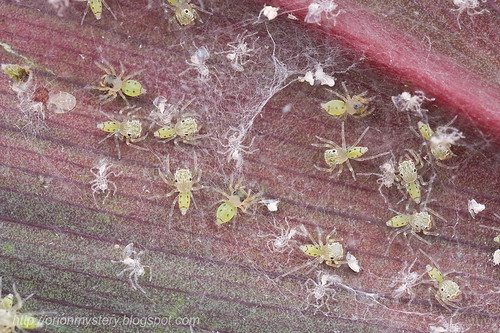

Comparision:
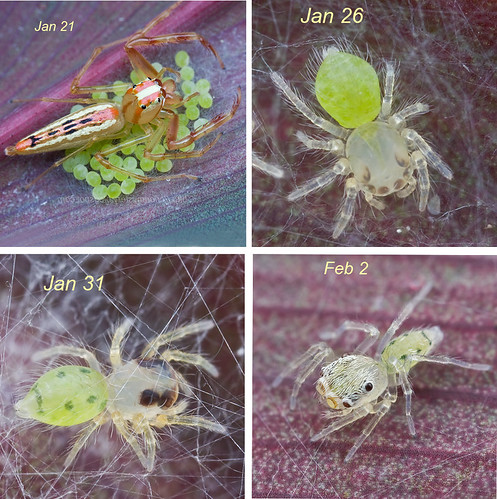
For similar documentation on Lichen huntsman life cycle click here.
More arthropod moms with babies in this post.
More tropical spiders.
Other spiders related posts:
1. Ant-mimic crab spider eating weaver ant
2. More ant-mimic spiders
3. Wonderful jumping spiders
4. Ant-mimic crab spider - mating!
5. Male red ant-mimic jumping spider
6. Tropical spiders
7. Jumping spider life cycle
8. Lichen huntsman life cycle
love the sequence
ReplyDeletebeautifully documented master kurt! *thumbs up*!
ReplyDeleteThank you, JW, Yeshwanth!
ReplyDeleteExcellent post
ReplyDeleteThank you, mindstorm!
ReplyDelete